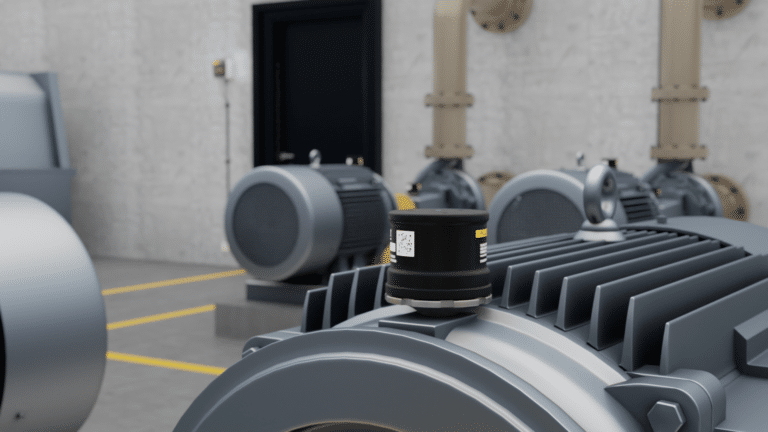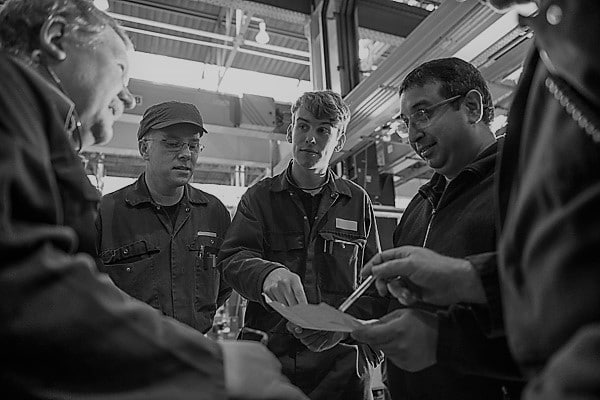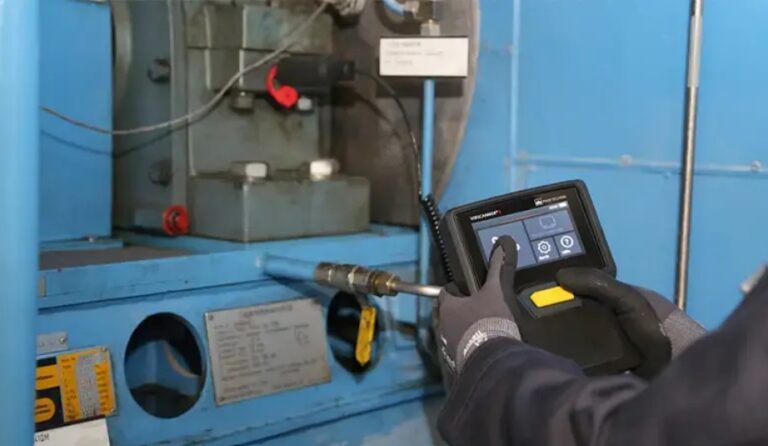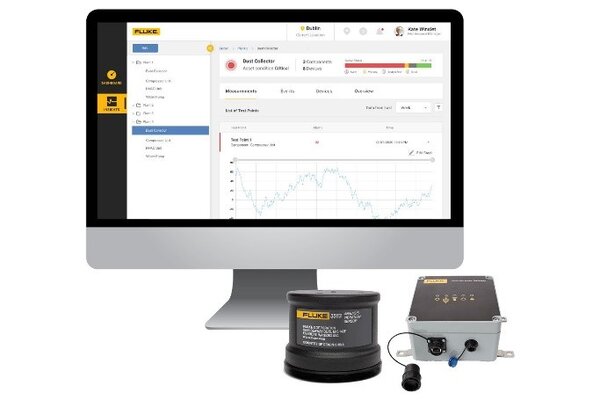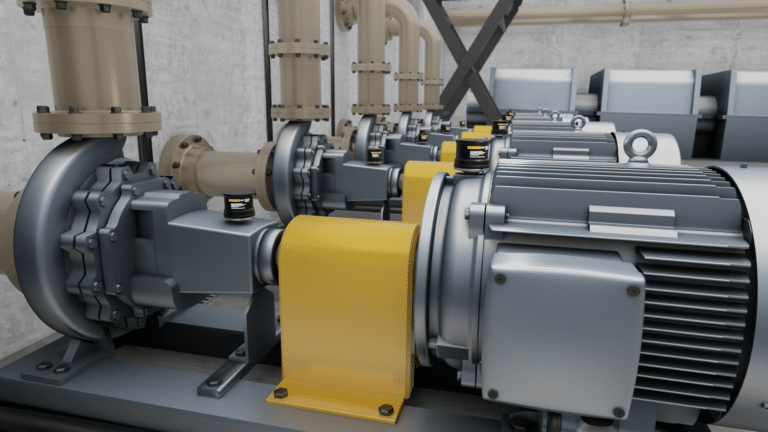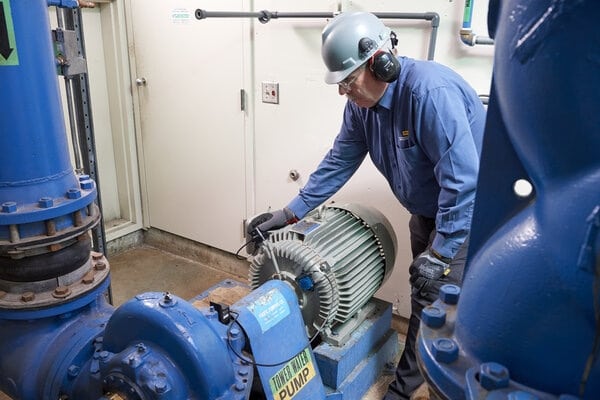
Condition-based maintenance (CBM) and predictive maintenance (PdM) are industrial maintenance strategies that can dramatically increase overall uptime and extend asset lifespan. But you might be wondering about the differences between condition-based vs. predictive maintenance, as the two strategies have a lot in common.
There are several key differences when it comes to condition-based vs. predictive maintenance. Namely, condition-based maintenance monitors your asset health in real time so that your crews can identify machine faults and repair them right away. Predictive maintenance, on the other hand, uses a combination of machine data and predictive algorithms to forecast your future maintenance needs.
In this article, we’ll go into detail about the distinction between CBM and PdM. We’ll also talk about the pros and cons of both maintenance strategies and how to decide which approach is right for you.
What is Condition-Based Maintenance (CBM)?
Condition-based maintenance, or CBM, monitors the health of your critical assets, empowering you to decide exactly when maintenance needs to be done. When your asset performance indicators cross a certain threshold, your maintenance crews are alerted so that they can make repairs.
CBM can increase efficiency and lower costs throughout your operation. By carefully monitoring asset health, crews can stay on top of your assets’ maintenance needs and make repairs as needed. This is more cost-effective than routinely inspecting and servicing assets on a calendar-based schedule.
CBM is also more efficient than reactive, run-to-failure maintenance strategies. Instead of waiting until your assets fail, CBM uses IoT in maintenance to monitor your assets for signs of degeneration and diminishing performance. This gives your teams plenty of time to make repairs and to avoid the cost of an unplanned shutdown.
How Does Condition-Based Maintenance Work?
Condition-based maintenance typically relies on a network of sensors, mounted on your most critical assets, to provide continuous real-time performance data. CBM usually uses a few different kinds of analysis to get a full picture of machine health:
- Vibration analysis
- Infrared thermography
- Ultrasonic analysis
- Oil analysis
Computerized Maintenance Management Software (CMMS) can help by automatically generating work orders in response to condition monitoring data. A CMMS can also help schedule industrial maintenance tasks, track inventory, and more.
What Are the Benefits of Condition-Based Maintenance?
Done right, CBM makes it easy to catch the early warning signs of a machine fault. That means your teams can focus their resources on the most important maintenance issues in your plant. It also means no more unexpected shutdowns that can put your production schedule in jeopardy.
Condition-based maintenance reduces maintenance costs by eliminating the need for calendar-based preventive maintenance tasks. Under a CBM approach, teams perform maintenance only when it is actually needed.
What Are the Disadvantages of Condition-Based Maintenance?
CBM relies heavily on human intelligence and decision-making. In many cases, plant managers have to set thresholds for machine health and make decisions about which conditions should trigger a response from maintenance.
Poor planning, flawed measurements, and incomplete readings can derail a condition-based maintenance program. If you’re operating with a limited team, or if your managers are already over-extended managing multiple worksites, then this can be a real concern.
What is Predictive Maintenance?
Like CBM, predictive maintenance uses a network of sensors to monitor the health of your most critical assets. But PdM uses data differently. It leverages historical asset health data, work orders, and ongoing sensor measurements to build up a complex picture of each asset’s performance indicators. Once you have this detailed picture, you can make highly accurate predictions about exactly when your assets will need to be maintained.
For example, in a plant using PdM, teams can often forecast exactly when a pump system will develop cavitation. They do this by analyzing data from vibration, temperature, and ultrasound sensors, and then making calculations based on historical and environmental data.
AI-enabled software is a great addition to a PdM program. The right AI tools can diagnose hundreds of machine faults, assess severity levels, and help set industrial maintenance priorities. A good CMMS can also help organize and analyze asset data, schedule tasks, and generate work orders.
What Are the Benefits of Predictive Maintenance?
Predictive maintenance keeps assets up and running for longer, dramatically reducing unexpected machine failure. Because it predicts future maintenance needs, PdM also improves budgeting, inventory, and scheduling.
PdM can save operations on industrial maintenance costs, ensure that production goals are met, and help teams maximize their use of resources.
What Are the Disadvantages of Predictive Maintenance?
The initial setup can be time-consuming and challenging, especially for an expertise-constrained organization. It’s often a good idea to work closely with a team of predictive maintenance experts, who can guide you through setting up and running the program.
The right team of experts can also help you select the right equipment, from sensors to software, and can help you train your crew in the new approach. Today’s software options and remote monitoring capabilities make it easy for even lean operations to use a PdM approach.
Condition-Based Maintenance vs. Predictive Maintenance: Which is Right for You?
There isn’t one right or wrong answer when it comes to choosing a maintenance program. Most operations will use a mixture of PdM, CBM, and preventive maintenance (PM). It’s a good idea to customize your strategy based on the criticality of your assets.
Our experts can help you plan and implement an industrial maintenance strategy based on your plant’s unique needs and goals. Contact us to speak to a specialist.

